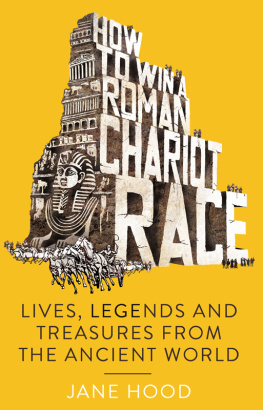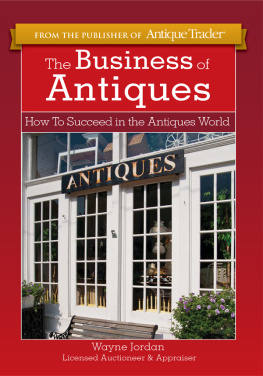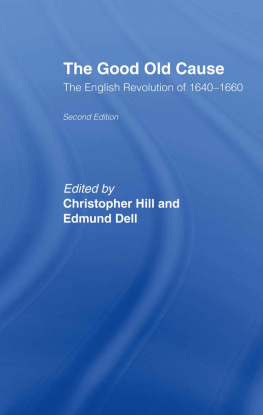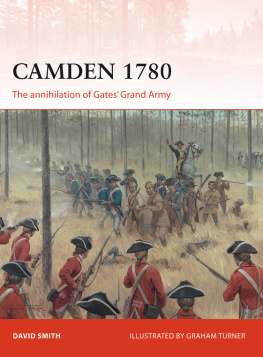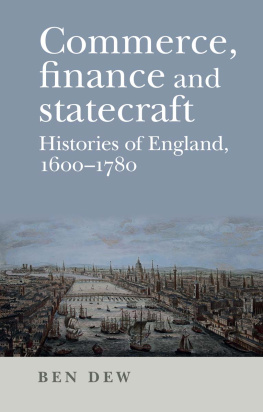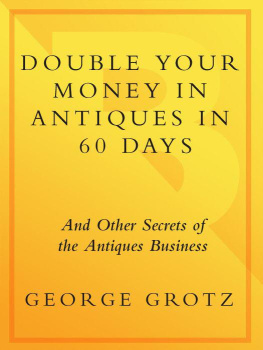Kalter - Modern antiques: the material past in England, 1660-1780
Here you can read online Kalter - Modern antiques: the material past in England, 1660-1780 full text of the book (entire story) in english for free. Download pdf and epub, get meaning, cover and reviews about this ebook. City: England;Lewisburg Pa, year: 2012;2011, publisher: Bucknell University Press, genre: Romance novel. Description of the work, (preface) as well as reviews are available. Best literature library LitArk.com created for fans of good reading and offers a wide selection of genres:
Romance novel
Science fiction
Adventure
Detective
Science
History
Home and family
Prose
Art
Politics
Computer
Non-fiction
Religion
Business
Children
Humor
Choose a favorite category and find really read worthwhile books. Enjoy immersion in the world of imagination, feel the emotions of the characters or learn something new for yourself, make an fascinating discovery.
- Book:Modern antiques: the material past in England, 1660-1780
- Author:
- Publisher:Bucknell University Press
- Genre:
- Year:2012;2011
- City:England;Lewisburg Pa
- Rating:4 / 5
- Favourites:Add to favourites
- Your mark:
- 80
- 1
- 2
- 3
- 4
- 5
Modern antiques: the material past in England, 1660-1780: summary, description and annotation
We offer to read an annotation, description, summary or preface (depends on what the author of the book "Modern antiques: the material past in England, 1660-1780" wrote himself). If you haven't found the necessary information about the book — write in the comments, we will try to find it.
Kalter: author's other books
Who wrote Modern antiques: the material past in England, 1660-1780? Find out the surname, the name of the author of the book and a list of all author's works by series.
Modern antiques: the material past in England, 1660-1780 — read online for free the complete book (whole text) full work
Below is the text of the book, divided by pages. System saving the place of the last page read, allows you to conveniently read the book "Modern antiques: the material past in England, 1660-1780" online for free, without having to search again every time where you left off. Put a bookmark, and you can go to the page where you finished reading at any time.
Font size:
Interval:
Bookmark:
Modern Antiques
TRANSITS:
LITERATURE, THOUGHT & CULTURE
Series Editor
Greg Clingham
Bucknell University
Transits is the next horizon. The series of books, essays and monographs aims to extend recent achievements in eighteenth century studies, and to publish work on any aspects of the literature, thought and culture of the years 16501850. Without ideological or methodological restrictions, Transits seeks to provide transformative readings of the literary, cultural, and historical interconnections between Britain, Europe, the Far East, Oceania, and the Americas in the long eighteenth century, and as they extend down to present time. In addition to literature and history, such global perspectives might entail considerations of time, space, nature, economics, politics, environment, and material culture, and might necessitate the development of new modes of critical imagination, which we welcome. But the series does not thereby repudiate the local and the national for original new work on particular writers and readers in particular places in time continues to be the bedrock of the discipline.
Titles in the Series
Figures of Memory: From the Muses to Eighteenth-Century British Aesthetics
Zsolt Komromy
Horace Walpoles Letters: Masculinity and Friendship in the Eighteenth Century
George Walpole
Thomas Sheridans Career and Influence: An Actor in Earnest
Conrad Brunstrm
The Self as Muse: Narcissism and Creativity in the German Imagination 17501830
Alexander Maths
Tobias Smollett in the Enlightenment: Travels through France, Italy, and Scotland
Richard J. Jones
Modern Antiques: The Material Past in England, 16601780
Barrett Kalter
Transits
Modern Antiques
The Material Past in England, 16601780
Barrett Kalter
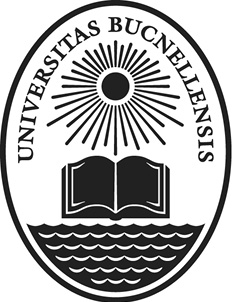
LEWISBURG
BUCKNELL UNIVERSITY PRESS
Published by Bucknell University Press
Co-published with The Rowman & Littlefield Publishing Group, Inc.
4501 Forbes Boulevard, Suite 200, Lanham, Maryland 20706
www.rowmanlittlefield.com
Estover Road, Plymouth PL6 7PY, United Kingdom
Copyright 2012 by Barrett Kalter
All rights reserved. No part of this book may be reproduced in any form or by any electronic or mechanical means, including information storage and retrieval systems, without written permission from the publisher, except by a reviewer who may quote passages in a review.
British Library Cataloguing in Publication Information Available
Library of Congress Cataloging-in-Publication Data
Kalter, Barrett.
The material past in England, 16601780 / Barrett Kalter.
p. cm.
ISBN 978-1-61148-378-9 (cloth : alk. paper) ISBN 978-1-61148-379-6 (electronic)
1. English literature18th centuryHistory and criticism. 2. Literature and historyEngland. 3. Chronology in literature. 4. Time in literature. 5. English literature17th centuryHistory and criticism. I. Title.
PR448.H56K35 2012
820.9358dc23 2011035731
 The paper used in this publication meets the minimum requirements of American National Standard for Information SciencesPermanence of Paper for Printed Library Materials, ANSI/NISO Z39.48-1992.
The paper used in this publication meets the minimum requirements of American National Standard for Information SciencesPermanence of Paper for Printed Library Materials, ANSI/NISO Z39.48-1992.
Printed in the United States of America
Acknowledgments
A n antiquary, according to the seventeenth-century satirist Samuel Butler, has his Being in this Age, but his Life and Conversation is in the Days of old. Its a pleasure now to thank the people who have made my time in the eighteenth century so interesting and enjoyable. I had the good fortune to study with Michael McKeon at Rutgers University. Incomparably learned and just as generous, he remains my model of what a scholar should be. Jonathan Kramnick, who suggested the title, Paula McDowell, and Suvir Kaul all gave valuable direction and encouragement at an early stage of this project. At the University of Wisconsin-Milwaukee, Mark Netzloff has offered sound advice and friendship, and Kristie Hamilton more than once supplied critical feedback that allowed me to see my project anew. For their conversation, enthusiasm, andon occasionmuch needed nudging, I want to thank them both, as well as my colleagues Sukanya Banerjee, Gwynne Kennedy, and Bill Van Pelt. The kind words and inspiring work of several people helped sustain me through the process: thank you, then, Luisa Cal, Rita Copeland, Lynn Festa, Robert Folkenflik, Judy Frank, Bill Galperin, George Haggerty, Alan Kalter, Jonathan Lamb, Chris Lezotte, Erin Murphy, Julie Park, Ray Ricketts, and Larry Scanlon.
This book was written with indispensable and much-appreciated financial assistance from the Center for Critical Analysis at Rutgers, The Paul Mellon Centre for Studies in British Art and Architecture, The Lewis Walpole Library at Yale University, and the Center for 21st Century Studies at UWM. I also wish to acknowledge the assistance of the staff at the British Library, the British Museum Prints and Drawings Study Room, the Bodleian Library, the Newberry Library, the Golda Meir Library at UWM, and especially Maggie Powell and Sue Walker at the LWL. At Bucknell University Press, Greg Clinghams great patience gave me the opportunity to complete the book. I would also like to thank the anonymous reader for providing detailed and constructive feedback on the manuscript. Karen Ackermann, Brooke Bascietto, and Kate Parker oversaw the production of the book with great care. Wim Delvoye kindly permitted me to use a picture of his striking sculpture for the cover. My thanks to him and Astrid Vergauwe, who provided the image. An early version of chapter three appeared in ELH ; I thank the journal for allowing me to reprint that material.
Finally, I owe my greatest thanks to my mother Judy Kalter, for teaching me to enjoy reading and writing, for her consistent support, and for her terrific sense of humor. This book is dedicated, with much love, to her.
Introduction
The Time Bound and the Modern Antique
A belief in the materiality of the pastthat which no longer exists and is therefore by definition immaterialis a central paradox of early modern historical consciousness. This materiality was both literal and conceptual: objects were thought to embody the past, and history itself was constituted as an object of inquiry through empirical procedures of collection, observation, analysis, and classification. The foregrounding of the object in historical scholarship can be traced back to the sixteenth century, when scholars seeking to revive antiquity advanced the idea that the past was best known through the study of its physical remains. This attention to the particular features of artifacts from different periods aided a shift from a traditional historical paradigm of cyclical change and enduring essences to a new paradigm of linear change and particularity. Beginning in the late seventeenth century, these innovative connections between things and time were disseminated to a large nonscholarly audience by way of print media, school curricula, the first public museums and circulating libraries, heritage tourism, and consumer culture. In short, a confluence of economic, intellectual, and cultural trends made a newly objectified and chronologically-organized history accessible, and indeed available for consumption, to an unprecedented degree.
This book studies the historical imagination in an age when history and imagination were becoming polarized. If an increasingly dominant empiricism deemed the imagination an ineffective, even misleading means of gaining access to the past, the tangible manifestations of history circulating in material culture made the very act of imagining the past seem redundant. Modern Antiques explores this dilemma by reading authorscentrally John Dryden, Thomas Gray, and Horace Walpolewhose perspective on the past was fundamentally shaped by their engagement with modern forms of historical scholarship. But while scholars promoted their work by claiming to have eliminated from history the illusions they associated with imagination, the writers I study upheld imagination as a faculty that could extend and reflect critically on the practices, findings, and tenets of contemporary scholarship. In this introduction I lay the groundwork for my analysis of the modern antique in the chapters that follow. Examining the complex convergence of the temporal and the material in the long eighteenth century, I will contend that it was not only the rupture from, but also the re-creation of the past that made the period modern.
Font size:
Interval:
Bookmark:
Similar books «Modern antiques: the material past in England, 1660-1780»
Look at similar books to Modern antiques: the material past in England, 1660-1780. We have selected literature similar in name and meaning in the hope of providing readers with more options to find new, interesting, not yet read works.
Discussion, reviews of the book Modern antiques: the material past in England, 1660-1780 and just readers' own opinions. Leave your comments, write what you think about the work, its meaning or the main characters. Specify what exactly you liked and what you didn't like, and why you think so.


